

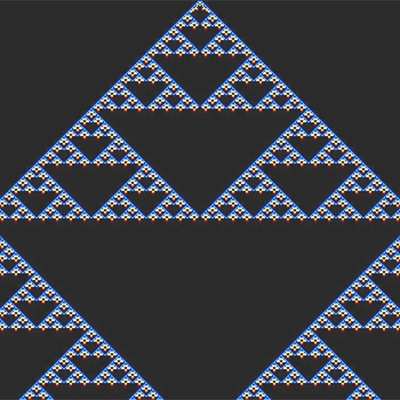



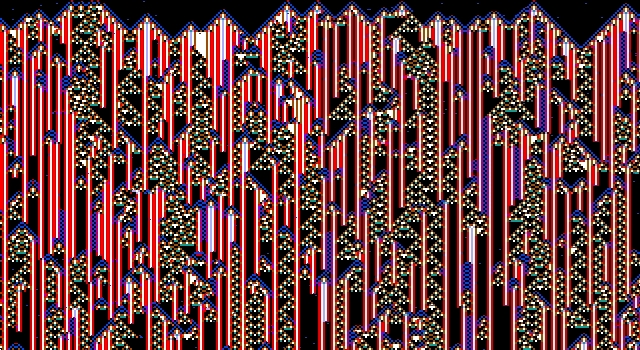









DOS-Programs Cellular Automata (starting 1992)
In search of the simplest possibilities to simulate the universal development of the world, already in the seventies Franke dealt with Konrad Zuse’s considerations on “Computing Space” (1969) as well as with the works of John Horton Convay and his “Game of Life” (1970). The body of works that emerged from this in the nineties, Cellular Automata, however, was influenced and determined above all by the theoretical works of Stephen Wolfram. He developed the mathematical theory of so-called “one-dimensional automata” in the eighties of last century. With this, the evolution of abstract world models can be traced in one dimension, namely the temporal dimension – and visually represented. In this process, the three-dimensional space of the “world” is reduced to a “point”, so to speak, which then evolves over the dimension of time, leading to a pattern. These structures are determined by two different parameters.
In search of the simplest possibilities to simulate the universal development of the world, Franke dealt with Konrad Zuse’s considerations on “Computing Space” (1969) as well as with the works of John Horton Convay and his “Game of Life” (1970). The body of works that emerged from this in the nineties, Cellular Automata, however, was influenced and determined later above all by the theoretical works of Stephen Wolfram. The initial conditions of the “world”: Here, the number of “elements” from which the “world” arises can be determined, as well as the position within the “world”. Franke experimented for example with 3, 7 or 10 such elements – and positioned them in a certain initial structure at the “big bang” of the universe.
The laws of the “world”: In addition, one can define the regularities with which elements interact when they “touch” each other. These can be more or less. In our world this corresponds to the physical interactions on quantum level with the question whether there is something like a world formula – then everything would be reduced to a single regularity – or whether there are several fundamental regularities in our world after all. But there could also be laws which change in the course of the development and thus are also subject to a temporal development.
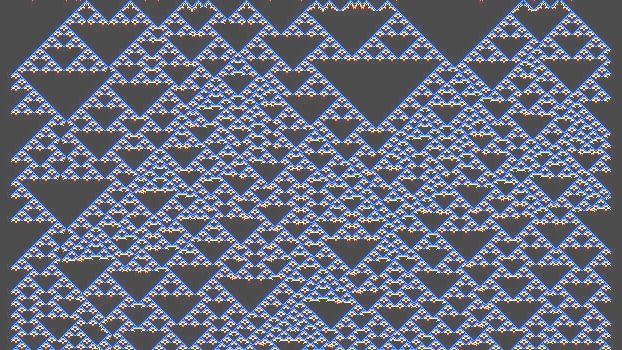

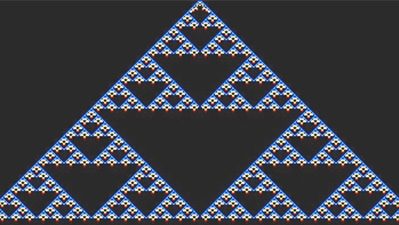

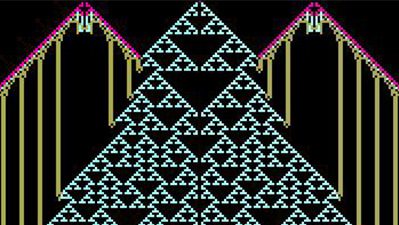

With these two programmed parameters – the initial conditions as well as the laws which can be grasped as algorithms – one can then follow the evolution of the “world”. Depending on the specifications, different visualizations occur in the temporal sequence, whereby the “world” is calculated in the cellular automaton – depending on the prevailing ones. The resulting patterns, which represent the structure formation in the universe abstractly, are determined exclusively by the two parameters for initial conditions and laws – and thus show a simplified, completely abstract model of the universe.
So much for the deterministic world model of cellular automata by Stephen Wolfram.
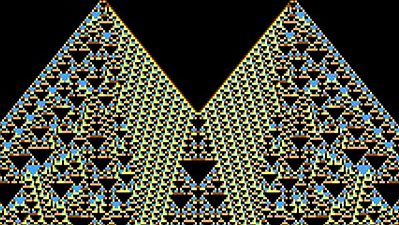





However, for the theoretical physicist Franke, who during his studies in the 1930s also dealt intensively with the then quite new quantum mechanics, random influences are an interesting field that goes beyond the approach of a deterministic world model. Convinced that “real randomness” exists in our world, Franke has therefore been working since 1992 on the consequences of introducing random influences of various kinds into the deterministic world model of cellular automata. In numerous visualizations, Herbert W. Franke has experimented with such dynamically growing world models, in which he has “interspersed” randomness more or less frequently only at the beginning or also during the ongoing development. Important results of his experiments: If one controls this “world” with constant laws, which do not change in the course of the development, then these structures come sooner or later into the condition of the solidification, the development of the “world” thus remains. If, however, one disturbs the course of events by individual, randomly placed numbers in the “world”, which change the regularities postulated at the beginning, more complex shapes are formed in the course of events, which can lead up to “organic structures”.
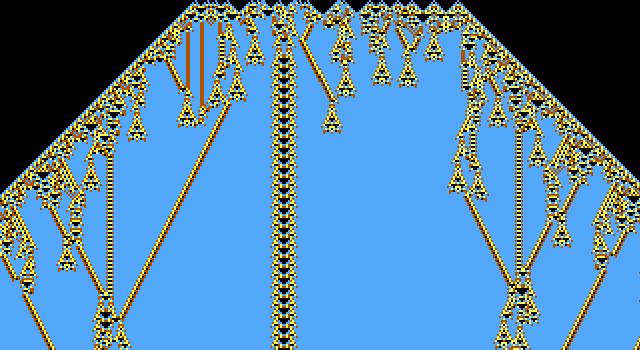

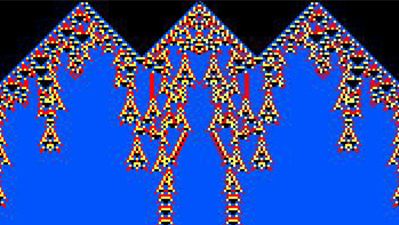

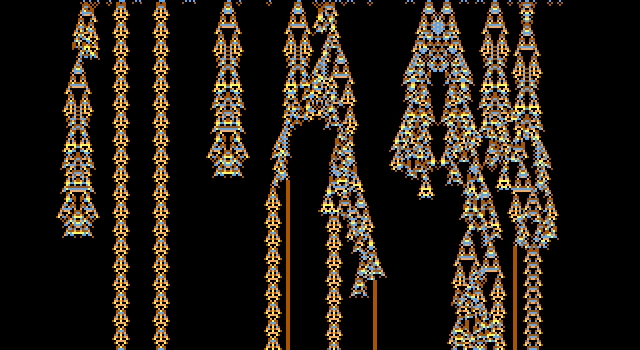

For Franke, the principle of random in the development of our world is a decisive trigger for the increasing complexity, whereby he is one of those philosophers who advocate “real” chance and not a deterministic view of the world, in which even the only “apparent” random components are already set by the initial conditions, i.e. represent only a “pseudo-randomness”, but are so complex that they elude our comprehensibility. Scientifically it is not to be clarified today whether this “real randomness” in our reality really exists, which can intervene independently of the initial conditions into our world and thus change it unpredictably.
Based on this visual-experimental work, Franke has written a philosophical non-fiction book about the structuring models of the world, The P-Prinzip, published by Insel-Verlag, where “P” stands for program. In it, he describes, among other things, the consequences of our universe consisting of a program in which the regularities would change in the evolution of structures, i.e., in which the laws of nature change through random processes during development. Besides this non-fiction book, Franke has also addressed these thoughts in one of his science fiction novels – Center of the Milky Way.
Click here for the other series of personal computers:
Programme DEC Professional 350
Programme DOS-Rechner
Serie Phantastische Welten
